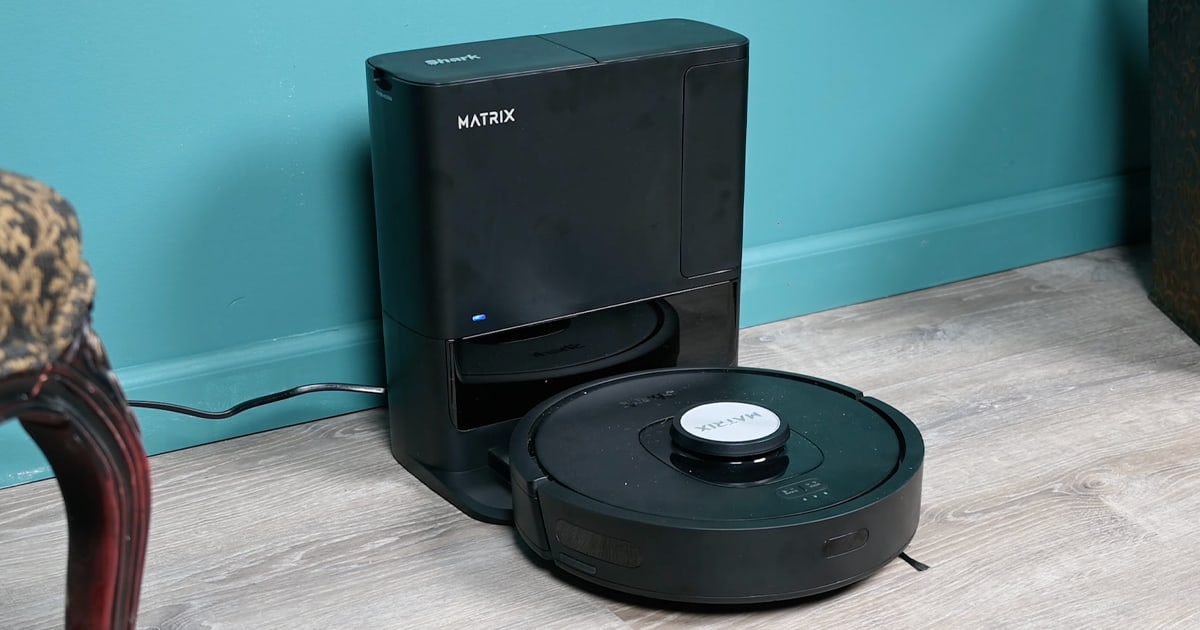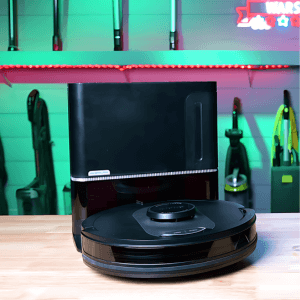Welcome to our review of the Shark Matrix self-empty Robot Vacuum. We purchased one to evaluate over a few weeks, and in this article, we’ll go over all the results from our Shark Matrix self-empty review. This includes findings from evaluations, its features, pros, cons, and how it compares to its most likely competitor, the Roomba i3+ EVO.
LiDAR and Auto-Empty Bin
The Shark Matrix (RV2310AE) is a LiDAR-based robot vacuum, which means it uses a spinning laser to map and navigate around your home. And as we’ll see later, it did this very efficiently.
It also comes with an auto-empty dust bin. That means when the robot returns to its dock to recharge, it will automatically empty the contents of its dust bin into a bagless bin. Shark is one of the few manufacturers that do bagless auto-empty bins, which is a pro in and of itself.
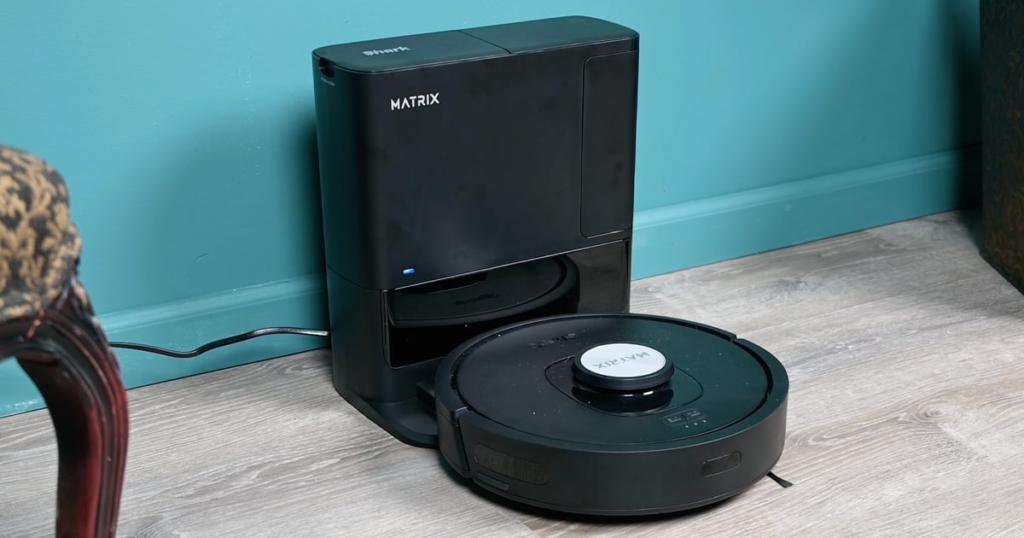
Shark has priced the Matrix quite low. It’s one of the most affordable robot vacuums available that features both LiDAR and an auto-empty bin. And while the Roomba i3 doesn’t have LiDAR and uses a less accurate floor tracking system for navigation, it’s still probably the Shark’s closest natural competitor due to the lower price of the Shark.
In the box
Suction and Airflow
Performance is where the Shark Matrix really shines. In our bench evaluations, where we assess things like suction and airflow, it was well above average.
We think that the Shark Matrix is Shark’s best-performing robot vacuum yet in terms of power, carpet and hard floor performance, and navigation. It’s an excellent value for its price.
Crevice and Carpet Deep Clean Test
Its power showed up in the crevice pickup evaluation, where it did significantly better than the Roomba i3+. The Shark Matrix also did extremely well with the carpet deep clean assessment. It scored more than a robot vacuum two or even three times its price.
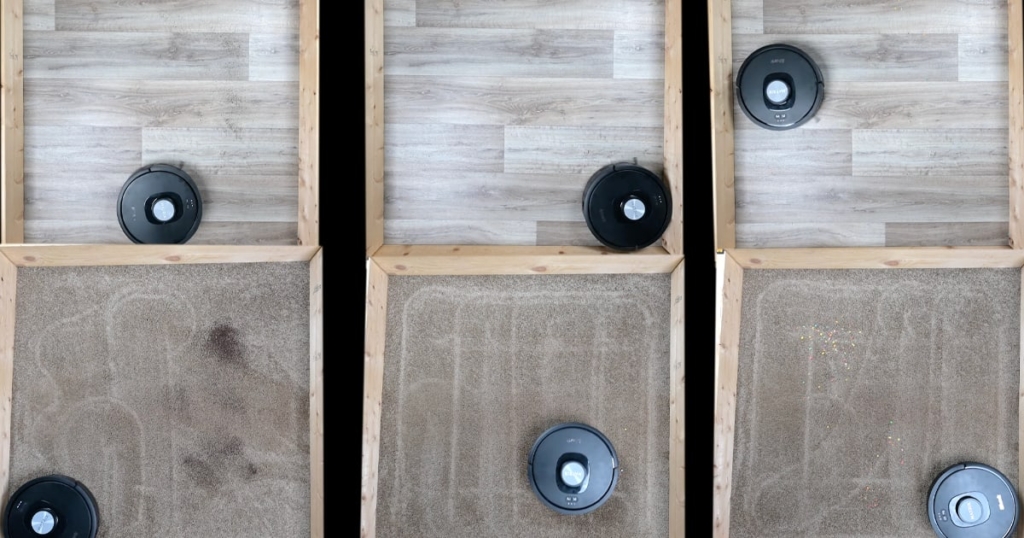
It was really good at removing debris from the surfaces of hard floors and carpets. While this is something that both the Shark and the Roomba excel at, as it is essentially the primary job of a robot vacuum, we were particularly impressed with the Shark’s sweeping ability. We think it’s the best pickup score we’ve seen from a Shark robot vacuum yet.
Navigation Evaluations
In our navigation assessment, we run each robot vacuum multiple times on a fixed floor plan in various modes and power settings. The Shark Matrix features a fast mapping mode, and it mapped our 350 square foot area in a little over five minutes, compared to the Roomba i3, which took 26 minutes.
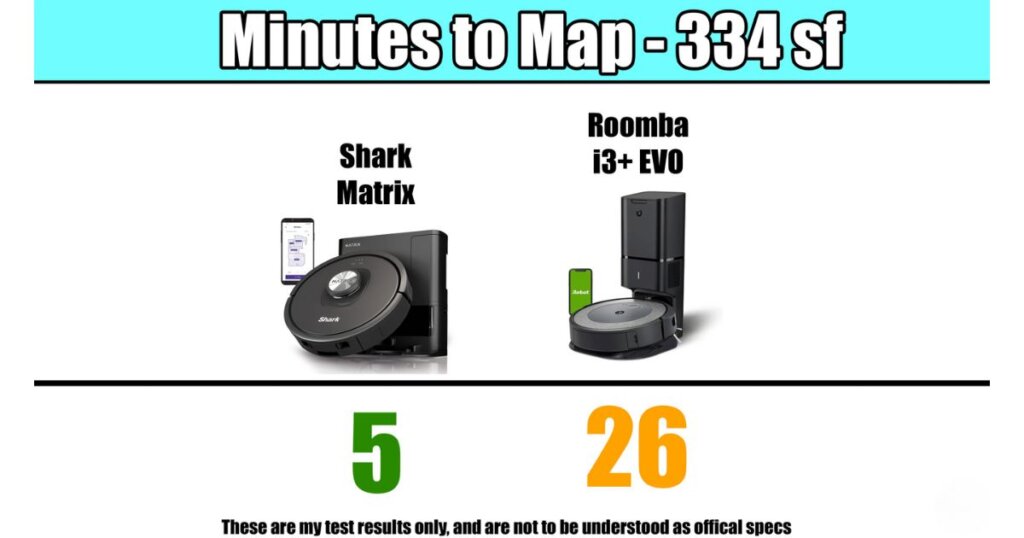
We also measured navigation efficiency, which refers to how quickly a robot cleaned an area and the total square footage it covered during that time. The Shark covered about 15 percent more area than the Roomba and did so about 28 percent faster. So, the LiDAR navigation really seemed to make a difference here for the Shark.
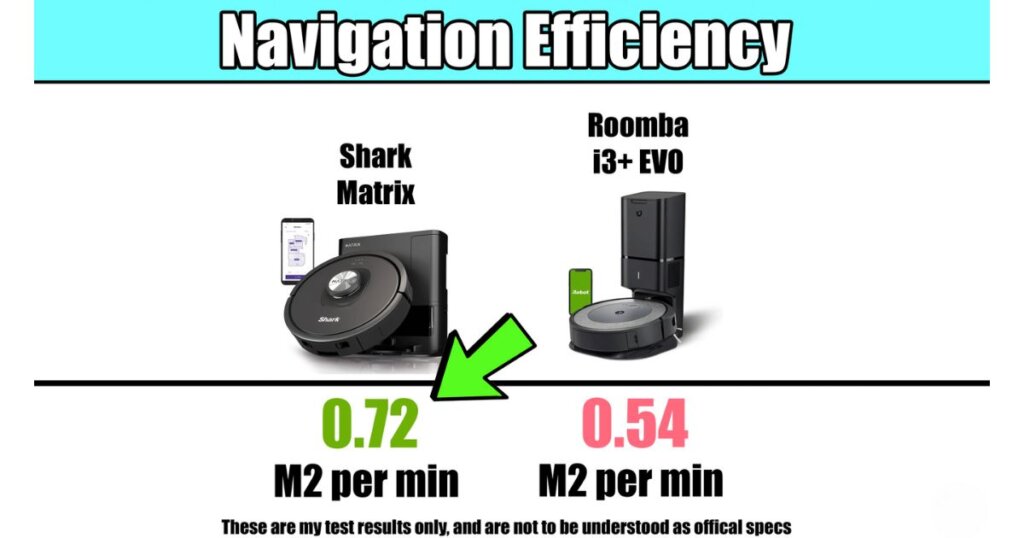
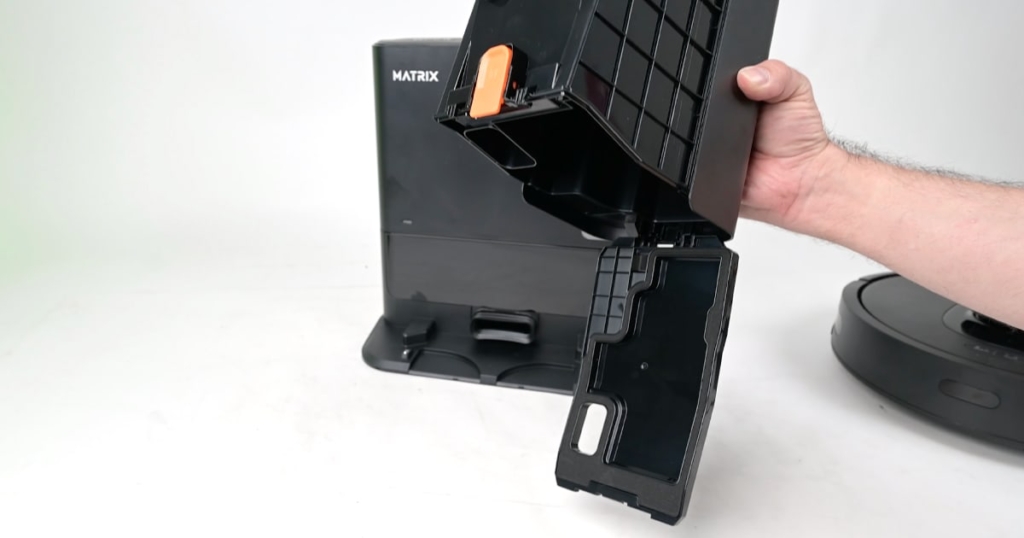
Battery Efficiency
We also measure battery efficiency during these evaluations. We found that the Roomba, on its one power setting, achieved an average of 1.41 minutes of run time per battery life percentage point. In contrast, the Shark got slightly less when its three power levels were averaged at 1.29 minutes per percentage point.
However, even though the Roomba had better battery efficiency, it wasn’t enough to compensate for its less efficient navigation. So, the math works out to the Roomba i3 being able to cover 820 square feet per charge, versus the Shark Matrix covering 1,000 square feet per charge.
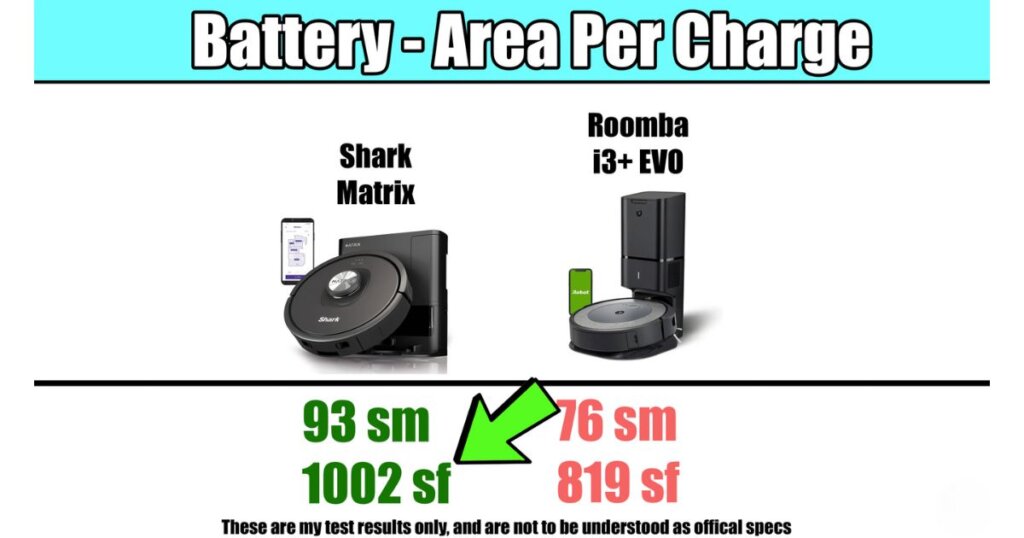
Take those numbers with a grain of salt, though, since there are so many variables. In any case, they both have a feature called recharge and resume, where if the battery runs out, the robot vacuum will simply return to its base, recharge, and then resume right where it left off on the map.
Features
The final category is features, and here we should discuss the Matrix mode on the Shark, as it is what this Shark model is named after. This mode can only be activated in spot cleaning or room cleaning mode. Instead of its usual back-and-forth pattern, it will clean in a cross-hatch or matrix pattern, and we’re fairly certain it does so at maximum power as well.
Deeper Cleaning
The idea behind the Matrix mode is that it can be used in areas with heavy traffic, which tend to be more soiled, such as around cat litter boxes or door entryways. It does seem to work fairly well, but it’s really only suitable for spot cleaning. You can’t even make the target area bigger on the map using the app, so it’s minimally useful.
Speaking of the app, Shark does have some high-end features like no-go lines, which prevent the robot from going places you don’t want it to, which is nice. The Roomba i3+ EVO does not have that feature. However, both have room cleaning and zone cleaning, as well as numerous scheduling options.
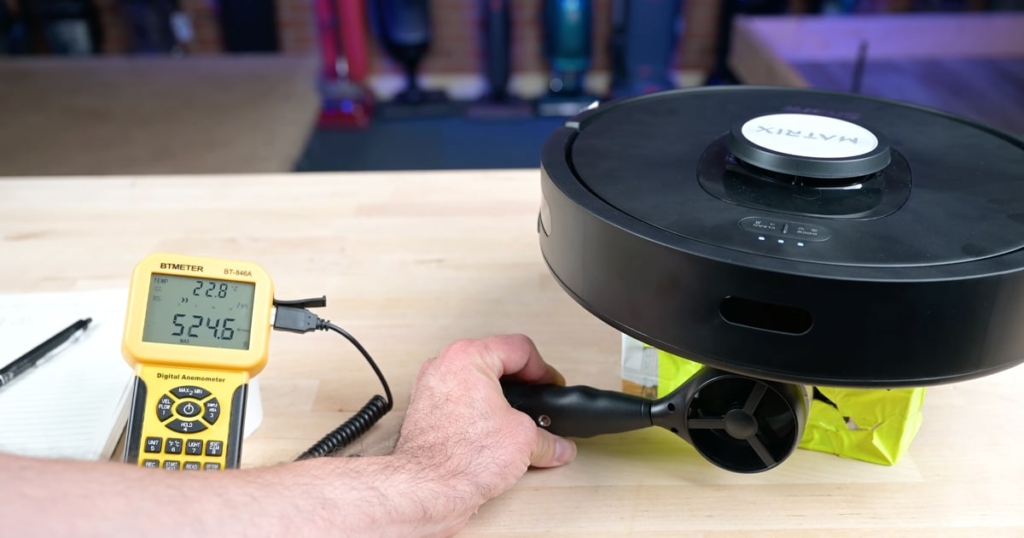
Anti-Hair Wrap
The Shark Matrix has an anti-hair wrap brush roll, which consists of little comb-like structures that actively remove hair from its brush roll.
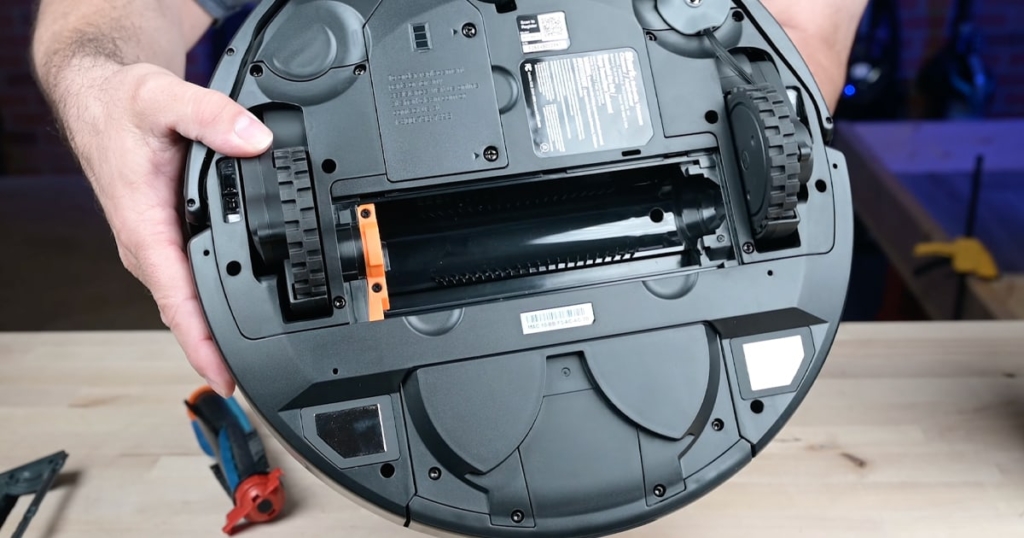
We believe Shark must have a patent for this, as we don’t see it on other robot vacuums. And while we love this feature on Shark’s upright and cordless vacuums, we’ve never really noticed a significant difference with it on robot vacuums.
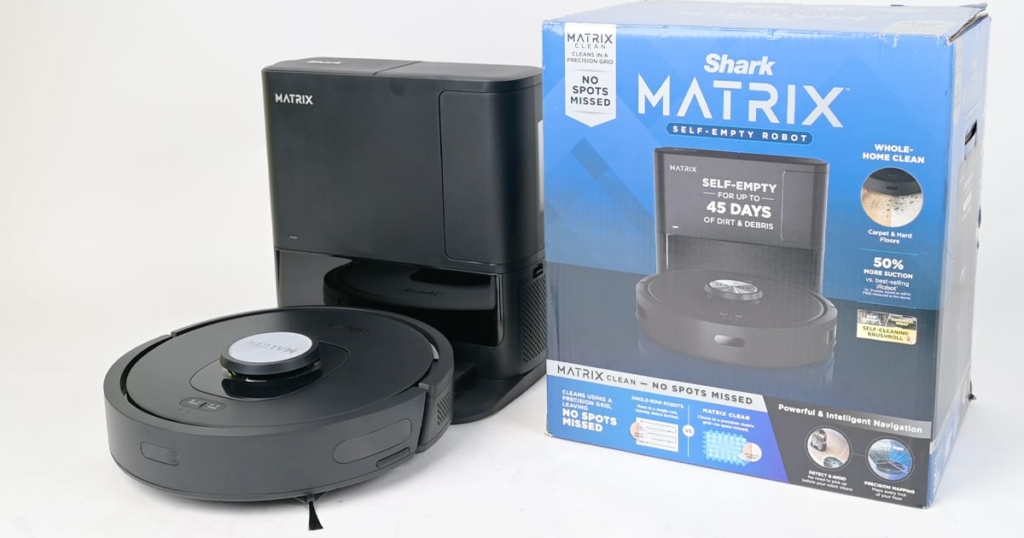
Verdict
In conclusion, we think that the Shark Matrix is Shark’s best-performing robot vacuum yet in terms of power, carpet, hard floor, and navigation performance. It’s an excellent value for the price, and in our scoring system, it beat the Roomba i3+ EVO without any trouble.
Specs
| Shark Matrix | |
|---|---|
| Model Number | RV2310AE |
| Dust Bin Capacity | 0.2 qt / 0/19 L |
| Navigation | LiDAR |
| Auto-Empty Bin | Included |
| Cleaning Path Width | 5.7 in |
| Google Assistant Compatible | Yes |
| Amazon Alexa Compatible | Yes |
| Cleaning Path Width | 5.7 in |
| Dimensions | 13.4 in x 13.4 in x 4.2 in |
| Weight | 13.2 lbs |
| Warranty | 1 Year |
